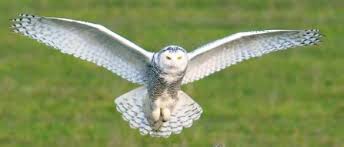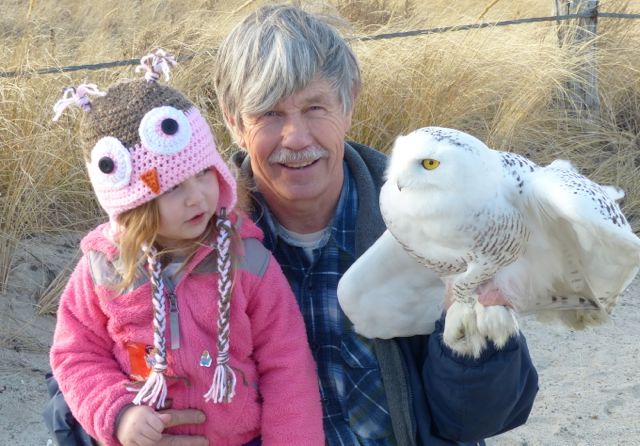By Doug Struck
Globe Correspondent
It was February, north of Yellowknife. I was reporting on the gritty truckers who ply roads made of ice to supply mines and villages in the Northwest Territories. In the winter dark, my headlights suddenly lit up a majestic white bird.
She had dropped onto the middle of a side road cleared of snow, and she glared back at my headlights with haughty defiance. I looked around, worried that one of the 30-wheeled trailers lumbering off the ice road would not be able to stop.
When I turned back, the road was empty. A fleeting white ghost. A snowy owl. Did she even exist, or was it my imagination in the cold?
 Hundreds of people in much warmer climes now have seen that visage, as the snowy owl, a visitor from the Arctic, has invaded southern territory. Excited reports of sightings from Bermuda to Florida to Louisiana have crackled across bird-watching networks.
Hundreds of people in much warmer climes now have seen that visage, as the snowy owl, a visitor from the Arctic, has invaded southern territory. Excited reports of sightings from Bermuda to Florida to Louisiana have crackled across bird-watching networks.
Norman Smith, head of the Snowy Owl Project and director of the Mass Audubon’s Blue Hills Trailside Museum in Milton, has numbers to prove it.
Snowy owls are regular, if occasional, visitors to Logan Airport. It is a flat, open expanse surrounded by water, and looking—except for the terminal and runways—very tundra-like. Smith typically gets called to capture six to ten owls there each winter. He bands them, takes them further on their migratory path, and lets them go. Already this winter, he has captured 85.
Smith, very likely the world’s ace of snowy owl naturalists, has caught and released more than 500 owls since 1981, and has enlisted his daughter and granddaughter to help. He has fitted the birds with small Teflon harnesses carrying satellite transmitters to follow their long-distance sojourns—and has tracked down the corpses of three owls illegally shot in Massachusetts.
“They are spectacular birds,” Smith says. “Here’s a bird that comes from someplace way up in the Arctic tundra, white, majestic, at the top of the food chain, an incredible predator. It can fly 7,000 miles in a year, and we know from Air Canada pilots it goes as high as 8,000 feet.”
And fearless. Smith has watched the owls snatch mice, rats, rodents, small birds, a blue heron, and even the world’s fastest peregrine falcon, surprising the fellow raptor as the falcon was intent on catching a starling.
No one is quite sure why so many snowy owls are so far south this year. The theory used to be that owls migrated toward the south in the winter because there was little food in the Arctic in the winter. Smith’s research turned that theory on its head. He proved there is a greater abundance of owls in southern areas when the breeding season is particularly productive in the Arctic tundra.
He theorizes a swollen population of the birds push more of them further south to find hunting territory. It is possible that climate change, which has warmed the Arctic at twice the global rate, may be providing a smorgasbord of new meals to the owls. Smith says there’s no proof of that theory, yet: “It’s all speculation,” he acknowledges. But he says the soaring numbers of owls may be a sign of something.
“When the canary in the coal mine dies, you know it’s not safe. When something is happening to the snowy owl, we ought to be looking pretty closely at the Arctic.”

(Photos: Top- Bostonglobe.com Bottom- Norman Smith, grandaughter Carmella Nihill and a snowy owl. Courtesy Norman Smith)